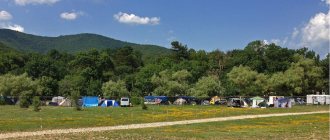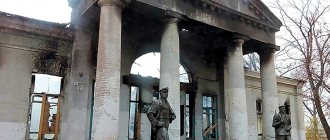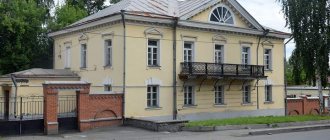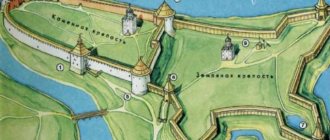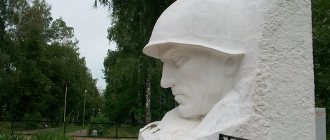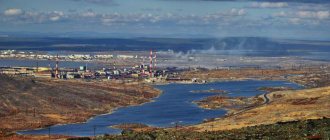3 May 2022, 10:40
On the morning of May 1, in the village of SMP, a few kilometers from the city of Zheleznogorsk, Kursk region, a warehouse for recycling used car tires was on fire.
They fought the fire for several hours. At this time, the entire area was covered in acrid smoke. Fortunately, there were no casualties. [td]
The fire was reported at 9.50. Smoke from burnt tires was visible hundreds of meters from the epicenter, even in the most remote neighborhoods of the mining town. The fire area was at least one hectare.
| Tons of old tires burned near Kursk (VIDEO) |
The entire garrison of the Zheleznogorsk fire department was sent to the scene of the incident; the Mikhailovsky Mining and Processing Plant provided its fire water monitors with a capacity of 40 tons.
An investigation into the case is currently underway and a number of examinations have been ordered. The department of supervisory activities for Zheleznogorsk and the Zheleznogorsk region is considering various versions of the fire. For example, a fire could spread to a warehouse when dry grass and debris were burned near the facility or due to welding work. Experts do not rule out the possibility of arson.
The version that the epicenter of the fire was indoors and the incident was possible due to faulty wiring or electrical appliances is excluded.
Yuri FROLOV, newspaper “Friend for a Friend”, photos and videos from the YouTube channel of the user DEMONAZER
Share link:
Subscribe to “For Each Other”:
Yandex News Yandex Zen Google News YouTube Video
The history of the closed city
At the end of the 40s of the last century, the nuclear industry began to actively develop in the USSR. It was necessary to find a place for a plant to produce components for such weapons. There were several requirements for the construction site: there should be a body of water nearby, away from the border, not far from a large industrial city. The plant must be located underground. It was believed that two hundred meters of earthen layer could protect against a missile strike. Such a place was found in a mountain range near the Yenisei.
In the spring of 1950, designers and survey specialists from Leningrad arrived there. During the same period, the Granitny forced labor camp appeared here; with the help of prisoners, 51 km of railway tracks were laid in six months. This made it possible to deliver cargo for the construction of the plant and residential areas in the shortest possible time.
The secret facility was carefully guarded: there were two rows of barbed wire along the perimeter, between which guards walked around the clock. In the summer, activities begin to prepare mining operations for the construction of plant No. 815 (mining and chemical). After 3 years, construction becomes large-scale. Prisoners of several correctional labor camps formed nearby, the number of which reached 70 thousand people, were engaged in the construction of the facility.
In 1954, the settlement around plant No. 815 officially became a city.
Zheleznogorsk - the name was intended for closed correspondence, Soviet bodies. For everyone else, the city began to be called Krasnoyarsk-26.
8 years after the start of construction, the first nuclear reactor of the AD MCC was launched. The plant was built in a mountain rock, underground at a depth of 200-300 m, protected from nuclear attack. The plant's tunnels were compared to the Moscow subway. The second reactor, ADE-1, came into operation 3 years later, and in 1964, the third, ADE-2, came into operation. All of them were intended for plutonium production; after cooling, the water was discharged into the Yenisei(!). The background radiation at this time was hundreds of times higher than permissible values.
Scientists and specialists of the plant are developing and implementing for the first time in the world a system for using heat from the operation of the ADE-2 reactor for heating and hot supply of residential buildings. Coal boilers were no longer needed. A radiochemical plant was built to process irradiated uranium blocks. Until 2012, it remained the only such enterprise in the world.
During the same period, in the early 60s, the USSR Government issued a decree on the production of missiles that were capable of delivering an atomic bomb to any part of the globe. The development was carried out by specialists from the Special Design Bureau No. 1 (OKB) under the leadership of S.P. Korolev. The Krasnoyarsk Machine-Building Plant was engaged in the production of rocketry. Soon, already in Krasnoyarsk-26, a branch of OKB1 appeared, headed by Korolev’s deputy M.F. Reshetnev. At that time he was only 34 years old. Now this is.
To test rocket engines, a stand called a “chemical plant” was built near Zheleznogorsk. In addition, brick, wood and concrete factories began to operate, and a sand and gravel quarry is being developed. By 1985, a tunnel was built under the Yenisei for the disposal of radioactive waste.
In the city, around the man-made lake, residential areas are growing, and all the necessary infrastructure is being created. Theatres, libraries, and cinemas appear. Difficult times for secret production came in the 90s, but the city-forming plant was preserved.
Since 1994, the city began to be called Zheleznogorsk.
In connection with the disarmament program, 2 reactors were disabled. Now the mining and chemical complex is part of the state corporation Rosatom.
New in blogs
Krasnoyarsk-26: The city underground - the secret of the devil's bunker
The last weeks of World War II in history will always be associated with the atomic bombing of the Japanese cities of Hiroshima and Nagasaki by US aircraft. In the current difficult situation, the USSR nuclear project became the highest priority in strengthening the country's defense capability. At the same time, to maintain maximum secrecy, the USSR’s nuclear shield was forged, among other things, in underground cities, the first of which was Krasnoyarsk-26.
Builders in uniform
If the leading scientists mobilized to create the Soviet atomic bomb worked in Moscow, then it was decided to place the main industrial facilities designed to create a nuclear shield away from prying eyes, in the vast forest expanses of Siberia. In the first years of the implementation of the atomic project, the construction of special facilities was carried out by the troops of the Ministry of Internal Affairs. Given the importance of creating the first atomic bomb, Stalin appointed Beria to lead this process. For this purpose, on August 20, 1945, under the leadership of Lavrenty Pavlovich, a Special Committee was created under the State Defense Committee of the USSR. From the first days of work on the atomic project, it was absolutely clear that in addition to scientists, in order to successfully complete the task set by the government, it was necessary to build a large number of industrial facilities. To solve this problem, on November 16, 1946, the “First Construction and Installation Trust” was created. This organization was given the most important task by the country's leadership to build research and production complexes, scientific and educational institutions, as well as social infrastructure facilities for the nuclear project. All work in this area was supervised by the all-powerful Ministry of Internal Affairs. At the same time, the leadership of the USSR came to the understanding that for sustainable operation, the main production facilities must be located in a place where a potential enemy could not detect them and destroy them. Therefore, in 1949, Stalin signed a secret order on the construction of the second stage of nuclear plants. The task set before Soviet builders was striking in its scale, and many of its details are still classified as “top secret.” One of the first and most large-scale projects was the construction of the Krasnoyarsk-26 plant city, located inside the mountain. The resolution on its construction was adopted by the Council of Ministers of the USSR in the summer of 1949, and, according to official data, during the implementation of this grandiose plan, more rock was extracted from the bowels of the mountain than during the construction of the first branches of the Moscow Metro. This project was called “Object “Rock”.
In the vastness of Siberia
Work began in the spring of 1950, after geologists found the most suitable place to create an underground military-industrial enterprise. A significant part of the most difficult work in excavating rock was carried out by prisoners. Graduates of a specially created institution by order of the Minister of the Ministry of Internal Affairs of the USSR, Colonel General S.N., were appointed to manage the construction. Kruglova Tomsk Military Technical School of the Ministry of Internal Affairs. The construction of an industrial facility, known as Plant No. 815, took place forty kilometers north of Krasnoyarsk in the mountain of the Atamanovsky Range. According to government orders, an enterprise was to be located inside the mountain range, which included three nuclear reactors to produce the plutonium-239 necessary for making atomic bombs. Initially, this component was produced near Chelyabinsk at the Mayak plant. But the country, on the one hand, needed much more plutonium-239 than one enterprise could produce, and on the other, the creation of this integral component of atomic bombs had to be duplicated for safety purposes. The fact is that industrial facilities located on the surface of the earth could theoretically be discovered and destroyed by a potential enemy. At the same time, the site near Krasnoyarsk, approved personally by Beria, had a number of beneficial advantages. It was located inside the mountain, which provided the enterprise with the necessary level of secrecy and safety from airstrikes. Even the nuclear bombs of the Americans of those years could not have penetrated 200-250 meters of rocky soil. In addition, the Yenisei flowed nearby, whose waters could be used to cool the reactor. Of course, the construction of such a grandiose structure cost a pretty penny, but it was extremely necessary for the security of the country.
Grand construction
Construction of Plant No. 815 began in May 1950 at an accelerated pace. As mentioned above, prisoners were used as mountain miners. At the same time, the prisoners worked, as they say, not out of fear, but out of conscience. The fact is that during the construction of the underground plant, the Soviet government introduced a unique rule: if the prisoner completed the plan at 121% or higher, one day of work was counted as three. In fact, with hard work, the prison term could be reduced by two to three times. In addition to the prisoners, metro construction specialists worked at the secret construction site, without whom the creation of such a large-scale underground facility would have been simply impossible, as well as numerous engineers of various specialties and miners. Moreover, the work of civilian specialists was well paid. In the first year of work, more than thirty thousand people were involved in the creation of the underground city. The mountains were broken into the depths from several sides. Three wide adits were laid from the Yenisei side, and an additional eight shafts were lowered into the mountain from above: they were intended to create ventilation and lay power supply cables. At the same time, active work was underway to lay the main transport tunnel inside the mountain, along which freight and passenger trains would run. A separate problem was the disposal of excavated soil and rocks. They had to be taken to a decent distance from the object so as not to attract unnecessary attention to it from agents of foreign powers. As a result, it was decided to use the rock waste to strengthen the Yenisei coastline in the form of creating a special cornice, along which a road and railway were then laid leading to an underground plant for the production of plutonium-239. It must be emphasized that, given the rare enthusiasm of the prisoners among the workers, as well as the importance of the project itself, mining work was carried out around the clock, seven days a week. Soon, at a depth of more than two hundred meters, a giant cavity 72 meters high (a 31-story building) was artificially created. Inside it, a hall was equipped to accommodate two reactors for the production of plutonium-239. However, despite the high pace of construction work, the implementation of such a technically complex project lasted for several years. Trains began running on the railway leading into the depths of the mountain in 1956. The work became easier, and by 1957 the underground cavity was ready for the installation of nuclear reactors. But production started only on August 28, 1958. The reactors were brought to their design capacity a year later, in September 1959. In order to emphasize the importance of this facility for the country's defense capability, on October 9, 1959, the head of state Nikita Khrushchev personally visited the underground enterprise.
Weapons-grade plutonium forge
According to historians, the main task of Combine No. 815, which later appeared in documents as the Mining and Chemical Combine, was to obtain weapons-grade plutonium, which did not exist in nature. To produce plutonium-239, it was necessary to irradiate natural plutonium with neutrons from uranium-238 in nuclear reactors. One of the reactors provided additional electrical and thermal energy to the plant and its satellite cities. The plutonium-239 obtained at the plant was subsequently supplied to factories for the production of nuclear charges located in other parts of the vast expanses of Siberia. The workers were transported to the plant by train, which made only two stops over its thirty-kilometer journey. The final point of the route was the plant, located in the depths of the mountain. The underground part of the movement of the electric train was a complete analogue of the movement of the city metro. Today, you can sometimes come across information that the workers of the underground plant lived under the mountain, like gnomes from some mythology. This is, of course, not true. A separate comfortable city was built for the company’s employees in the remote taiga, whose residents have never known shortages or everyday inconveniences. Store shelves have always been filled with a wide range of fresh products, and department stores have always been filled with quality clothing and other goods. The houses in the closed city were built in the classic Stalinist style with large, spacious and comfortable apartments. The only restriction was a non-disclosure agreement regarding the existence of both the city itself and the underground plant where its residents worked. There were no strangers here. As a result, the crime rate in the city was practically zero. Only in 1994, part of the secrecy was removed from the site, and the city acquired its own name - Zheleznogorsk. Unfortunately, no matter what level of secrecy was created around this strategic facility, American intelligence notified its leadership of the existence of a Soviet underground facility for the production of weapons-grade plutonium already in the early 1960s. However, this did not prevent the plant from fulfilling its role throughout the second half of the 20th century. Today, the plant also continues to operate, supporting our country’s nuclear shield.
D. Sokolov.
St. Petersburg sophistication on the banks of the Yenisei
Simultaneously with the construction of a secret facility, the city begins to grow. The architecture of the middle of the last century was distinguished by solemnity and pomp and was based on the experience of the masters of the 18th century. This symbolized the victory of the Soviet system. During the construction of buildings and architectural structures of those years, the urban planning style of Leningrad was taken as a basis. Many specialists in the field of construction came from this city on the Neva.
“Leningrad motifs” can be seen in snow-white columns, in sculptures standing in parks and on the roofs of houses. Many small details, in the form of stone stucco or a fragment of an elaborate lattice, are reminiscent of beautiful St. Petersburg and its color. Let's admire some of them, which sometimes cause bewilderment and misunderstanding. And perhaps this is the uniqueness and attractiveness of such objects. After all, this is part of the city’s history that needs to be preserved.
Rescue of the plaster girl
In 1955, a nursery was opened, and the figure “Girl with Pigeons” was installed next to the building. It stood for more than 60 years and greatly changed its appearance. Local residents were surprised, not understanding: who is this, why is this here? Perhaps this is Panikovsky with a goose? In July 2016, the sculpture moved to the park. It turned out to be the only surviving object of socialist realism from the mid-20th century. Thanks to the initiative of the director of the park and the skill of an associate professor of the Department of Drawing at the Institute of Architecture and Design of Siberian Federal University, the girl’s figurine was restored. Now contemporaries can admire this Soviet-era artistic object in a city park.
Who encroached on the composer
Another interesting story is connected with the bust of M. Mussorgsky, installed in the early 50s in front of the children's music school. The sculpture was made of cement and marble chips. After the school moved to another building, the bust remained in the warehouse of the Mining Chemical Combine for a long time. The main artist of the city gave new life to the sculpture. The bust was mounted on a pink marble pedestal and decorated with decorative details in the form of a tuning fork and a bronze wreath.
Unscrupulous lovers of the precious metal became interested in this. In the early 90s, these jewelry were successfully stolen. What's good about a small city? And the fact that such a thief can be identified and found very quickly. And so it happened. The thief did not have time to hand over the bronze, and Mussorgsky successfully accepted his image with the bronze decoration.
How is the population of a “smart” city different, where there is a large concentration of the population of descendants of the first nuclear scientists? A peculiar sense of humor, an ironic attitude towards some life circumstances. For example, for almost 4 decades there has been an architectural composition near the factory administration building, which local residents call “a man in a jacket.” Why? But because no one knows who served as the prototype for this stone-iron man.
100 kg head
The older generation remembers how they collected waste paper and scrap metal during their school years. It was interesting, the spirit of competition between classes forced schoolchildren to voluntarily look for various pieces of hardware and drag them into the school yard. And then check visually who has the most iron. So, for the 60th anniversary of the Komsomol and the 25th anniversary of the school, students of the school named after Zoya Kosmodemyanskaya collected a large amount of scrap metal, the money from the delivery of which was used to make a sculpture of Zoya.
The students collected a lot of material about the life of a Komsomol member. The physical education teacher brought a capsule with soil from the place of Zoya’s death. The sculpture in the form of Zoya's head was cast from bronze and weighed 1 quintal! Now the monument can be seen in the courtyard of the 91st gymnasium.
The city has other notable monuments from the Soviet past. For example, a monument to S.P. Korolev is understandable and appropriate in the city of nuclear scientists. The first option was rejected because it did not resemble a scientist. I had to make another bust, this time without any comments.
Digitalization? - what's this?
There is another rarity in the city - this is the oldest printing house, which is already 60 years old. Any printed information is printed here, and the text is typed manually. Therefore, typesetters are the production elite, because the text is typed in a mirror image from lead letters! How professional do you need to be to type lines of text blindly? We can say that these are all outdated technologies, because now there is computer layout and phototypesetting for this.
One can only admire the printing house team, which, despite digitalization, copes with huge volumes of printed products. Many workers have only one entry in their work book: about hiring.
About culture and faith
For a long time, the secret city remained completely closed to the church. In Soviet times, this applied to the entire population, and not just Zheleznogorsk. In the early 90s, an initiative group in the city came up with a proposal to create an Orthodox community and build a temple. The first service was held in the museum building on Christmas Day 1991. The construction of the temple was not easy; funds had to be found independently. With donations from parishioners, entrepreneurs, and large enterprises, the temple was built and the first service was held on November 21, 1999.
Craftsmen from Moscow, Sergiev Posad and Nizhny Novgorod took part in the work on the interior decoration of the temple. Most of the icons were painted by local painters. Ancient technologies were used using paints based on natural raw materials: egg yolk and white wine. In 2008, the temple was given the status of a Cathedral.
On the initiative of Kurchatov, who believed that nuclear scientists should not be divorced from culture, already in the first years of construction, a drama theater was created at the Spartak cinema. By the beginning of the 60s, in the city, with a population of 80 thousand, there were already two professional theater troupes, one musical. Of course, at first the main spectators were military personnel.
At that time, according to urban planning standards, to create an operetta theater it was necessary that the city population be at least 350 thousand. For this reason, the drama troupe was disbanded in 1968. And the operetta theater still gives its performances and participates in the cultural life of the city and region. The theater building also deserves attention: the facade is decorated with stucco and monograms. The interior is made in the best traditions of old Russian theaters. The hall capacity is 300 seats, ticket prices are quite affordable: 150-400 rubles.
Climatic and environmental conditions
Zheleznogorsk is located in a zone of sharply continental climate. Due to the low humidity, winter frosts and summer heat are easily tolerated here. After the commissioning of the Krasnoyarsk hydroelectric power station and the appearance of the reservoir, winters became milder. Probably many people think that in such cities of nuclear scientists there is an increased background radiation. Winds blowing from Krasnoyarsk bring more harmful substances to Zheleznogorsk. They carry emissions from industrial enterprises.
Zheleznogorsk is surrounded by a forest belt that purifies the air. There are several boards installed on the buildings that show background radiation. Usually it is 4 times less than acceptable. The content of radionuclides in food does not differ from the national average.
Other Kursk news for this day
3 May 2022, 18:26
Kursk residents face two more days of abnormal heat
[/td]
3 May 2022, 18:00In the Kursk region, searchers discovered about 90 wartime ammunition | |
3 May 2022, 17:50Electricity will be cut off in two districts of Kursk | 3 May 2022, 17:31Construction of new nuclear power units has begun at the Kursk NPP-2 site |
3 May 2022, 16:47Over the weekend, 74 drunk drivers were detained in the Kursk region | 3 May 2022, 16:44In Kurchatov, a man and a woman from Kursk stole a children's quadcopter from a store |
3 May 2022, 16:38A cyclist and a motorcyclist do not separate in the Kursk region (PHOTO) | 3 May 2022, 16:21The final of the Russian Cup "Tosno" - "Avangard" (Kursk) will be judged by referees from the Europa League semi-finals |
3 May 2022, 16:15Kursk rescuers are examining a house in Michurinsk damaged by a gas explosion | May 3, 2022, 16:00Kursk judoists distinguished themselves at the All-Russian and international tournaments |
3 May 2022, 15:34The driver of a Gazelle was injured in an accident in the Kursk region | 3 May 2022, 15:10A wanted suspect in theft was detained in the Kursk region |
3 May 2022, 14:55A 16-year-old motorcyclist and a girl riding with him were injured in an accident in Kursk. | 3 May 2022, 14:41A music festival in honor of Victory Day will be held in Kursk |
3 May 2022, 14:30KamAZ and Skoda collide in Kursk region: three injured | 3 May 2022, 13:11Kursk region. Employers will stop paying sick leave |
3 May 2022, 12:44In the Kursk region, due to abnormal heat, the fire danger class increases to +30 | May 3, 2022, 11:40A car overturned in Kursk, three boys and two girls were injured |
3 May 2022, 11:17Raids to prevent dry grass burning will be held in Kursk | 3 May 2022, 10:51The heat in Kursk broke May records |
May 3, 2022, 10:46 amThermal power engineers offer residents of Kursk joint control over the preparation of houses for winter | 3 May 2022, 10:20Avangard (Kursk) has applied for licensing to participate in the Europa League |
3 May 2022, 10:09More than 160 Kursk residents contacted doctors about tick bites | May 3, 2022, 10:00In Kursk, seven people were evacuated due to a burning apartment |
3 May 2022, 09:27Kursk management companies fined for faulty control systems | 3 May 2022, 09:15Kursk The running season starts at the hippodrome on May 5 |
| 3 May 2022, 08:51 |
